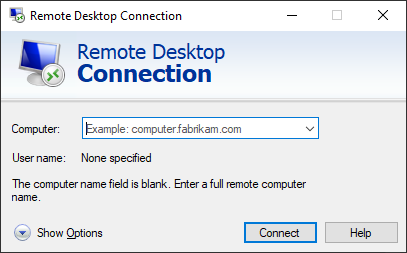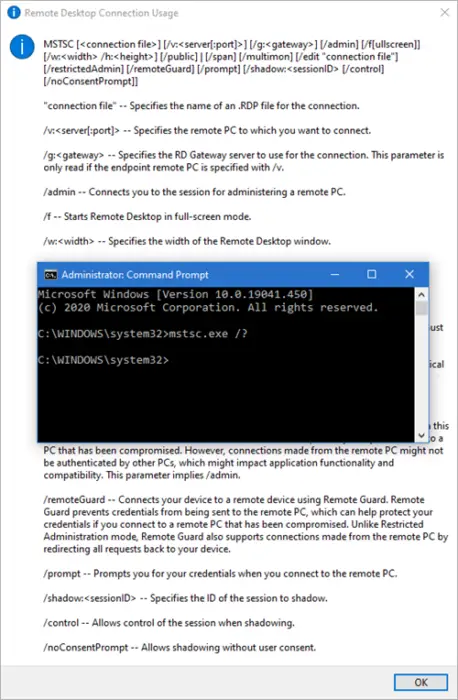The Remote Desktop Connection (RSD) feature has been active in the Windows operating system since Windows NT Server 4.0; though as a Terminal Server. Come the Windows 10, RSD now exists as an inbuilt standalone app that can be accessed from not only Windows 10 computers but from major mobile and computer OS like Android, iOS, Linux, and Mac. RSD has been used by many companies and firms to control and operate computers in its network remotely. It is also essential for solving problems on devices you can’t access physically.

What is a Remote Desktop Connection?
Remote Desktop Connection (RSD), which is often shortened to Remote Desktop, is a feature created by Microsoft that allows a local computer to control a remote PC after connecting to it over the internet or a network.
Simply put, Remote Desktop Connection is the ability to connect and use another computer from your computer.
Before we proceed, note any edition of Windows can act as a Remote Desktop Client. But to host a remote season, you need a PC running Windows 11/10 Pro or Enterprise.
We have already seen the different ways to enable Remote Desktop Connection in Windows. Today, we will take a look at some command-line options for using RDP. Instead of starting Remote Desktop Connection from the Start menu, Windows 10/8/7 allows you to start it from the search box, from the Run dialog box, or from a command line. With these methods, you can use additional command line parameters to control how Remote Desktop Connection looks or behaves.
Command Line Parameters for Remote Desktop Connections

From the Run dialogue box or the Command Prompt, we can carry so many instructions easily. To see all the possible commands and a brief description you can access, copy and paste any of the commands below:
mstsc.exe /?
This is the syntax-
MSTSC [<connection file>] [/v:<server[:port]>] [/g:<gateway>] [/admin] [/f[ullscreen]] [/w:<width> /h:<height>] [/public] | [/span] [/multimon] [/edit "connection file"] [/restrictedAdmin] [/remoteGuard] [/prompt] [/shadow:<sessionID> [/control] [/noConsentPrompt]]
Continue reading to see a few descriptions:
- Whenever you connect to the server, Windows opens a new user session. You can avoid this by opening a connection to the console. Add /console to the mstsc
mstsc /console
- To open remote desktop session in full screen, run the command below (/f);
mstsc /f
- To specify the remote computer name from the command, use the command below (/v);
mstsc /v:computername
Brief description of the Syntax above
"connection file" – Specifies the name of an .RDP file for the connection.
/v:<server[:port]> – Specifies the remote PC to which you want to connect.
/g:<gateway> – Specifies the RD Gateway server to use for the connection. This parameter is only read if the endpoint remote PC is specified with /v.
/admin – Connects you to the session for administering a remote PC.
In this version of Remote Desktop Connection, if the Remote Desktop Session Host role service is installed on the remote computer, running mstsc /admin will do the following (for the current connection only):
- Disable Remote Desktop Services client access licensing
- Disable time zone redirection
- Disable RD Connection Broker redirection
- Disable Remote Desktop Easy Print
- Disables Plug and Play device redirection for this connection only.
- Changes the remote session theme to Windows Classic View (if it’s available) for this connection only.
/f – Starts Remote Desktop in full-screen mode.
/w:<width> – Specifies the width of the Remote Desktop window.
/h:<height> – Specifies the height of the Remote Desktop window.
/public– Runs Remote Desktop in public mode.
/span – Matches the remote desktop width and height with the local virtual desktop, spanning across multiple monitors, if necessary. To span across monitors, the monitors must be arranged to form a rectangle.
/multimon – Configures the Remote Desktop Services session monitor layout to be identical to the current client-side configuration.
/edit – Opens the specified .RDP connection file for editing.
With the Remote Desktop Connection, you have access to only computers in your network. You can use only one remote desktop connection on Windows at a time, i.e., one remote user per Windows.
However, a PC running Windows 11/10 Server edition can run remote Sessions for different users at the same time.
Read next: How to use Windows Remote Desktop in Windows Home (RDP).
Leave a Reply